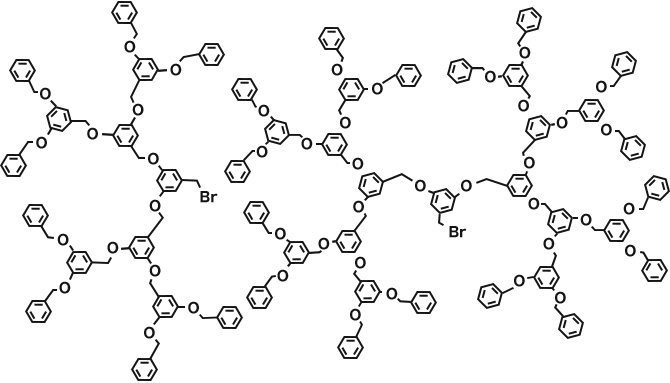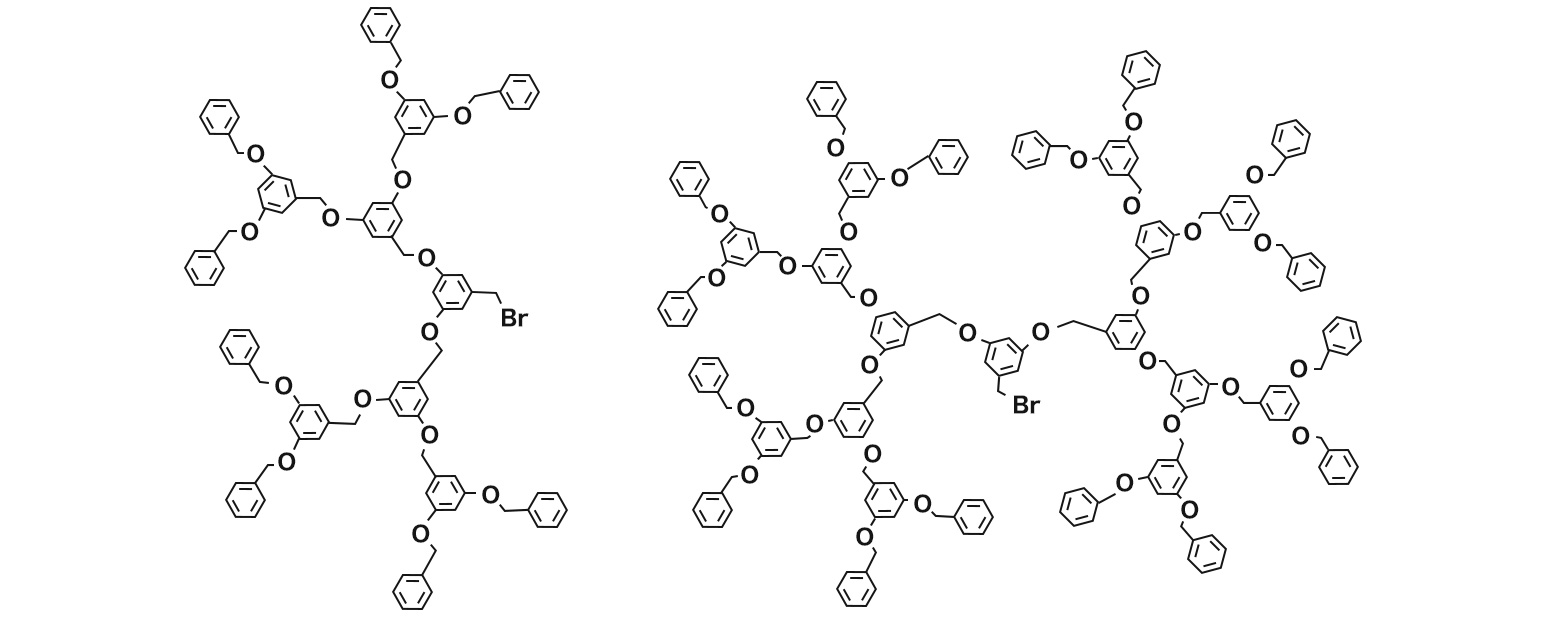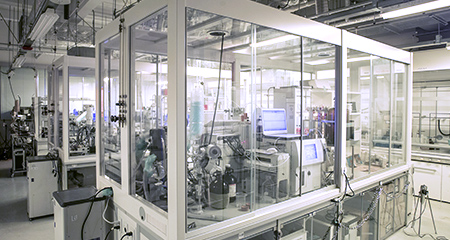Dendrimers
NARD Institute Ltd. responds to your requests by synthesizing new dendrimer materials and dendrimers.
Dendrimers are branched or multi-branched polymers that were initially reported in 1984 by D. A. Tomalia et al.
Dendrimers are generally of singular molecular weight, exhibit low viscosity, and are amorphous with a diameter of less than 10 nm. They exhibit features not observed in conventional polymers such as core and outer-shell functionality, single-molecule micelle formation, and the possibility of internally incorporating metals or other molecules. Additionally, because high-generation dendrimers may be considered to be molecular spheres, a large number of functional groups can be introduced into the molecular surface. They are expected to yield new highly functional materials in the pharmaceutical, electronic materials, and chemistry fields.

Dendrimers comprise the following three elements: a core; a branching structure; and an outer shell (termini). While the properties of the outer shell determine the reactivity and solubility, the core affects the size and functionality.
Two methods are used for the synthesis of dendrimers: the divergent method, which involves stepwise (generational) extension of the branches from a core molecule, and the convergent method, which involves pre-synthesizing the branches completely before finally coupling them to the core molecule. When compared with conventional polymer synthesis, structural control is simple, and design possibilities are diverse. From the basic precursors, several forms and sizes may be constructed.
By completely utilizing our accumulated experience in fine chemical synthesis, NARD Institute Ltd. performs research and synthesis of dendrimer precursors (building blocks).
In addition, we can create dendrimers with new functionalities by binding the building blocks with core parts.
Example of fourth- and fifth-generation dendrimer building blocks


In addition, we accept contracts for the relatively simple synthesis of custom hyperbranched polymers. While dendrimers require repeated protection–deprotection, hyperbranched polymers are generally synthesized through one-step polymerization of the ABx polymers.
Using several polymerization techniques, we can obtain novel hyperbranched polymers.
Related contents
Inquiries about products and technologies
Please contact us for consultations and inquiries regarding products and technologies.





